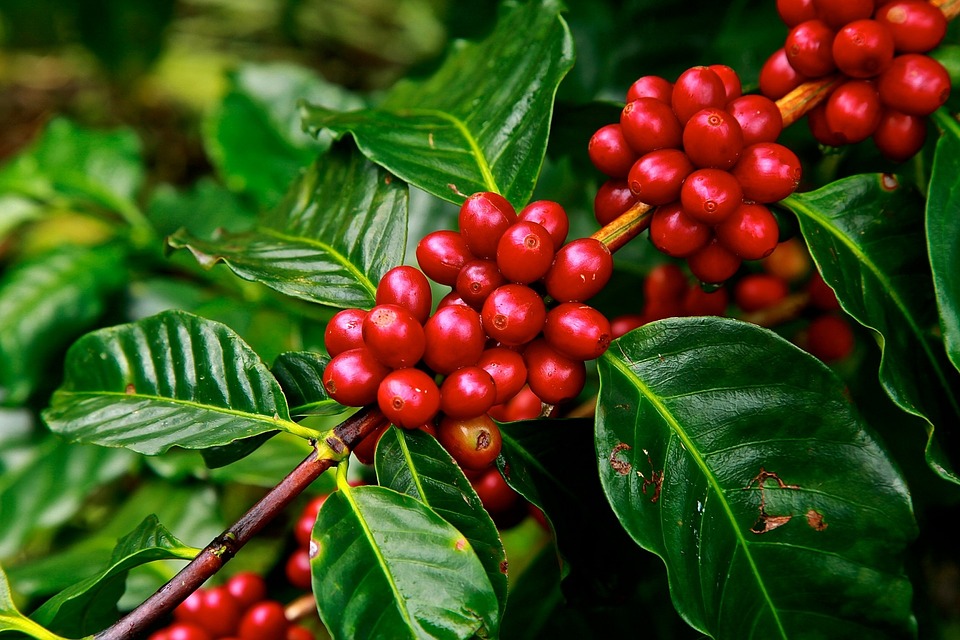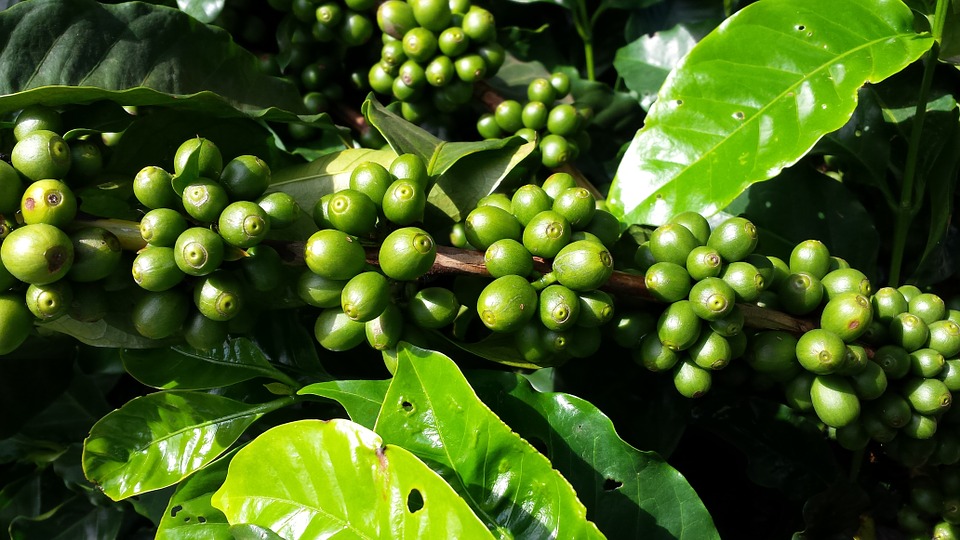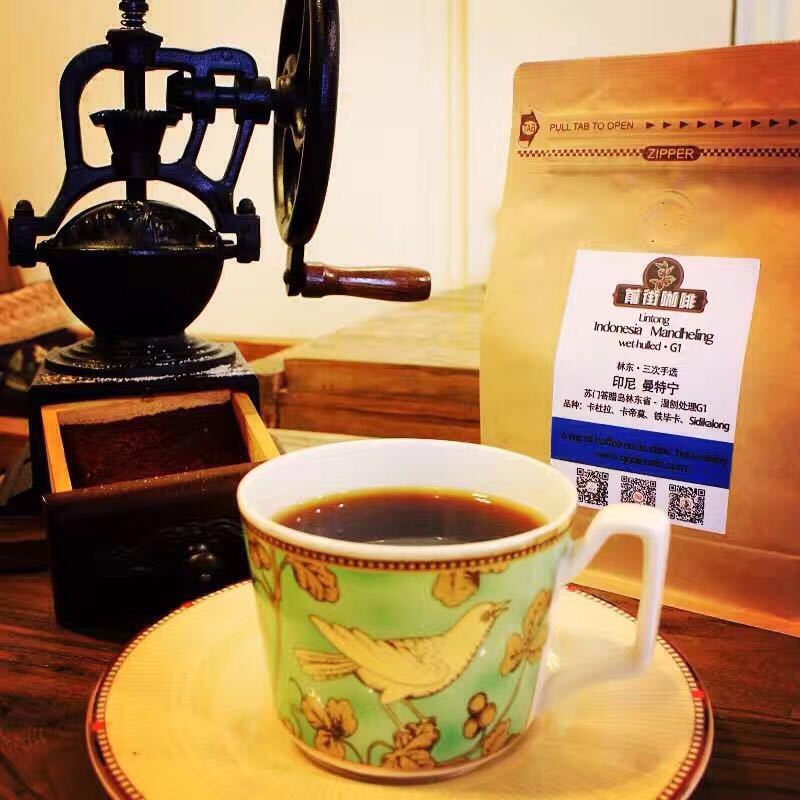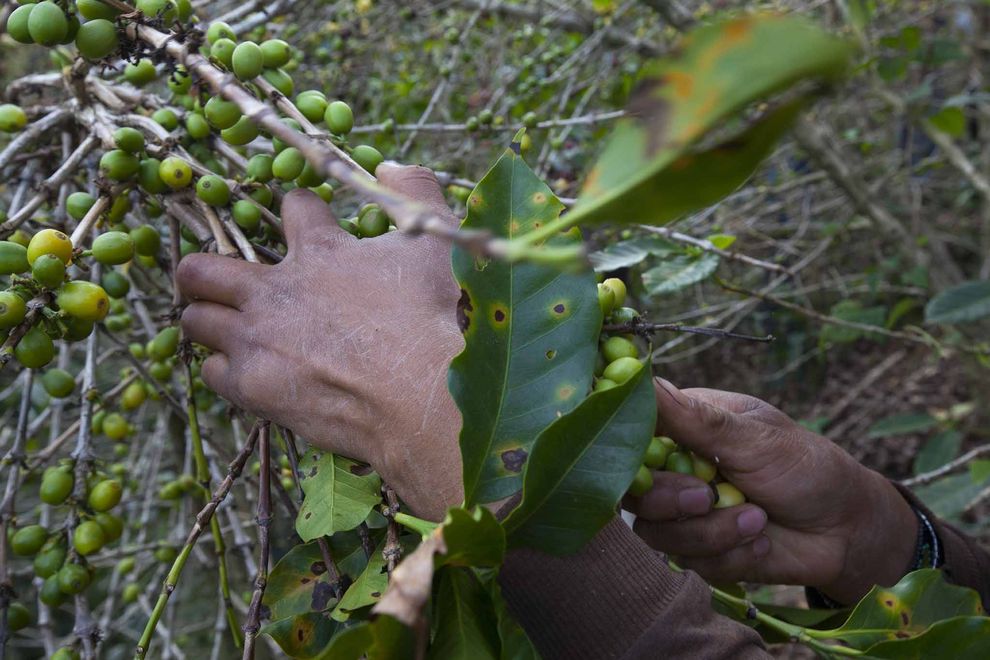The vicious circle of climate change, the decline of bees and the decline of coffee production
For professional baristas, please follow the coffee workshop (Wechat official account cafe_style)
Global warming affects the growth of many crops, so does coffee, which not only reduces yields and produces dramatic changes in flavor and aroma, but also aggravates crop diseases and insect pests.
But what we may not have thought is that honeybees, one of the most important pollinators in nature, are also deeply affected by climate change, which further affects coffee production, NPR reports.
Although coffee is mostly self-pollinating crops, it will not become extinct without bees. However, honeybee pollination helps to increase production, with about 20-25 per cent of coffee bean production coming from honeybee pollination, an important fact pointed out by Taylor Ricketts, director of the Gunder Institute for Environmental Studies (Gund Institute for Environment) at the University of Vermont. Not only that, bees can also make coffee beans more consistent in size and improve crop quality.
But climate change is threatening bees and coffee bean plantations. As a result, the Proceedings of the National Academy of Sciences (Proceedings of the National Academy of Sciences) published a new study that claims to be the first to simulate the effects of climate change on coffee and bees.
The team estimates that climate change by 2050 will reduce the area suitable for growing coffee beans in Latin America, an important coffee bean producing area, by 73-88%, much higher than other previous studies have estimated. In addition, the diversity of honeybee species will also decrease by 8-18% in areas suitable for growing coffee beans in the future. Although all producing areas can retain at least five species of honeybees, about half of the producing areas can retain more than ten species.

"We know that climate change will damage agriculture in a variety of ways. Ricketts said, for example, to move areas suitable for coffee and bees in different ways.
"these are individual species, but they happen to be facing habitat change at the same time. "but these creatures have different levels of heat resistance," Ricketts said. For example, when the heat tolerance of bees reaches a tipping point, there is no way to enter warmer coffee producing areas.
So Ricketts said the team was curious: when the land suitable for growing coffee is relocated and shrunk, will pollination insects exacerbate the problem of coffee production reduction and climate change, or help alleviate it?
After using a computer model to evaluate, they found that the answer was yes. Although the diversity of honeybees in most coffee producing areas will be reduced, about 16% of the honeybee species in coffee producing areas will be more expensive.
According to estimates, the countries that will lose the most coffee producing areas include Nicaragua, Honduras and Venezuela. However, the area suitable for growing coffee may be slightly expanded in some areas, such as Mexico, Guatemala, Colombia and Costa Rica.
"We will lose a lot, but only gain a little more. "Ricketts said.


In addition, in some areas, climate change has very different effects on coffee adaptation and honeybee species diversity. The team suggests that 10-22% of areas where coffee bean adaptability and honeybee species will increase in the future (meaning positive coupling), but about 34% of areas where 51% of them will decline (meaning negative coupling). In addition, in 33% of coffee-growing areas, honeybee diversity will be reduced, but coffee adaptability will be improved.
Ricketts stressed that these discussions are not just about the availability of coffee in the future, but also about the impact on millions of small farmers who depend on coffee for a living. "the crisis facing the place of origin is actually more, not just worrying about whether the cup of espresso that I like to drink in New York will become more expensive. Climate change will pose a threat to crops that millions of people depend on in poor parts of the world. "
As for how to deal with it? The study suggests several ways to help mitigate the impact of climate change on coffee farmers:
Attention should be paid to maintaining the habitat of wild bees in coffee-producing areas, especially those new species born after global warming.
Secondly, in areas where honey species may decline, with the increase of coffee adaptability, priority should be given to the management of coffee plantations so as to increase honeybee habitats and help to maintain the original local honeybee species. For example, in warm climates, placing coffee trees in the shade not only keeps coffee beans cold, but also makes them more suitable for pollination insects.
For areas that will experience negative coupling in the future, as coffee beans can no longer be grown, strategies should focus on supporting farmers to switch to other crops suitable for future climatic conditions, or to find non-agricultural livelihoods.
You may have heard that if bees disappear from the earth, humans will not live for four years. No matter where this sentence comes from, bees are indeed closely related to human life. In fact, coffee is one of more than 1/3 of the world's crops that depend on bee pollination to survive.
Even if we can't do anything about the coffee producing area right away, global warming is a problem that everyone should do their part to save bees. This report provides a simple way to start with yourself: plant more flowers in your courtyard or balcony.
Important Notice :
前街咖啡 FrontStreet Coffee has moved to new addredd:
FrontStreet Coffee Address: 315,Donghua East Road,GuangZhou
Tel:020 38364473
- Prev

Which store is good on Taobao? Coffee workshop in front of the street coffee Taobao shop coffee beans or coffee powder bad?
In recent years, the growth trend of Taobao coffee shops can definitely be described as blowout. I roughly divided them into several categories, neither blowing nor blackening. I selected the best of them for your reference. 1. Coffee shop representative who has established a cooperative relationship with the coffee plantation: M2M Coffee characteristics: the price is reasonable, and the variety of Ninety Plus coffee beans is the most true. I have recommended M2M to people countless times.
- Next

With reduced production and higher prices, climate change may lead to no coffee to drink in the future?
Communication of professional baristas Please pay attention to the coffee workshop (official Wechat account cafe_style) Central America is too humid and Brazil is too dry to teach coffee what to do. In Guatemala and throughout Central America, coffee production has been greatly reduced by infection with a fungus called coffee rust. Along the equator, which is most suitable for coffee growth, the problem of yield reduction is mostly due to extreme rainfall. PHOT
Related
- What brand of black coffee is the most authentic and delicious? what are the characteristics of the flavor of the authentic Rose Summer Black Coffee?
- Introduction to the principle and characteristics of the correct use of mocha pot A detailed course of mocha pot brewing coffee is described in five steps.
- Which is better, decaf or regular coffee? how is decaf made?
- How much is a bag of four cat coffee?
- How about four Cat Coffee or Nestle Coffee? why is it a cheap scam?
- Which is better, Yunnan four Cats Coffee or Nestle Coffee? How about cat coffee? is it a fake scam? why is it so cheap?
- How about Cat Coffee? what grade is a hoax? which instant coffee tastes better, four Cat Coffee, Nestle Coffee or G7 coffee?
- Process flow chart of coffee making-Starbucks coffee making process what coffee tastes good at Starbucks
- The top ten best coffee beans in the world Rose summer coffee or Tanzanian coffee tastes good
- Yunnan four cat coffee is good to drink?_four cat coffee is a big brand? four cat blue mountain coffee is fake?

